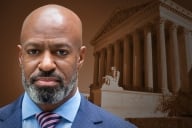You have /5 articles left.
Sign up for a free account or log in.
Forty-three years ago this month, George Wallace fulfilled his campaign promise to stand "in the schoolhouse door" to keep black students out of Alabama's schools and colleges. Wallace made his stand in the doorway of Foster Auditorium of the University of Alabama at Tuscaloosa.
Wallace failed to keep black students out, but whether the state's colleges are desegregated remains an open question, even after all these years. A federal judge on Thursday ordered a new trial to take place this fall on whether the state has sufficiently removed vestiges of the segregated system. Alabama officials say that it has, and that the state no longer needs court supervision. The plaintiffs in the case -- black citizens -- argue that the state has failed in key ways to bring about equity in higher education.
As other states' desegregation cases have wound down, the focus has been on public historically black colleges and whether they have enough academic programs and facilities to attract a range of students of various races. And that will be one of the issues in the new Alabama trial, with plaintiffs arguing that Alabama A&M University, a historically black institution, has not received enough money for facilities and repairs, despite previous court rulings ordering the state to do so.
But the plaintiffs also plan to focus on two other issues: the lack of need-based financial aid in the state and the low numbers of black faculty members at many of the state's public colleges. What the number should be -- in a state where black people make up more than a quarter of the population but lag in many educational areas -- is a matter of much debate, with colleges pointing to recent gains and black leaders pointing out how long it took for progress to start and how out of proportion black professors are to the state's population.
At the flagship Alabama campus in Tuscaloosa, for example, 56 of the 922 total faculty members are black. But that 6.1 percent is more than twice what the percentage was in 1991, 2.6 percent. A spokeswoman said that the university had many programs in place to help with recruitment of black professors and that the increase reflected a "dedicated and lasting commitment."
But James U. Blacksher, a lawyer for the black citizens in the case, said he was struck by the way colleges with less money and name recognition -- he cited the University of West Alabama -- had made substantially more progress. Blacksher said that he was not seeking any firm number, but the establishment of plans that were sufficiently ambitious and that demonstrate a real understanding of the way racial issues have played out in Alabama and its universities. At West Alabama, the gains have been dramatic: In 2000-1, 2.3 percent of faculty members were black. In the next academic year, 15.9 percent will be black. Officials largely credit a program that identifies potential faculty talent, pre-Ph.D., and helps pay for graduate education in return for an agreement to teach at the university.
Race has remained a highly sensitive issue in the state. Even as the University of Alabama has made substantial progress in attracting black students, for example, many have noted that the Greek system that dominates campus social life remains almost entirely segregated.
With regard to students, Blacksher said that his main goal would be the creation of a need-based aid program in the state. While the lack of such aid hurts low-income black and white students alike, he said that because so many more black families are poor, the lack of financial aid has the effect of limiting black enrollments statewide.
A spokeswoman for the Alabama Commission on Higher Education said that the state's official position was that Alabama was desegregated. "We had hoped to see the conclusion of the case, but we respect the judge's decision. We have followed the guidelines and we've made great strides," she said.








